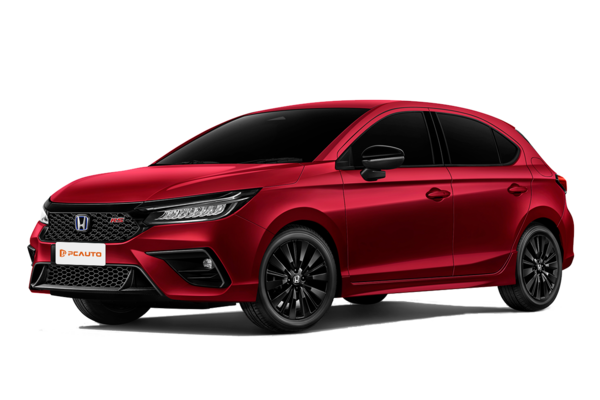Q
when will proton x50 launch
Proton officially launched the much-awaited X50 in Malaysia on October 27, 2020. This B-segment SUV packs a 1.5-liter turbocharged engine under the hood and offers three distinct trim levels: Standard, Executive, and Flagship, with prices ranging from RM79,000 to RM103,000. As Proton's second strategic model following its partnership with Geely, the X50 builds on the success of the X70, especially when it comes to smart tech features. It comes loaded with advanced goodies like ADAS driver assistance systems, a fully digital instrument cluster, and intelligent voice control – making it a solid fit for young Malaysian families and urban commuters alike.
What really stands out is the X50's impressive 70% local assembly rate. Not only does this help keep the price competitive, but it also underscores Proton's commitment to boosting Malaysia's automotive industry. If you're in the market for an SUV, the X50 definitely deserves a spot on your shortlist, thanks to its sleek looks, generous equipment, and wallet-friendly pricing. My advice? Head down to your nearest Proton showroom for a test drive and see what this model can do firsthand.
Special Disclaimer: This content is published by users and does not represent the views or position of PCauto.
Popular Models
Related Q&A
Q
What is the most sold Toyota in 2023?
Looking at global and Malaysian market data for 2023, Toyota's top-selling model is the Corolla Cross. This compact SUV has won over plenty of buyers with its versatility, fuel efficiency, and the tried-and-true reliability Toyota is known for. Here in Malaysia, it's a hit because it blends city-friendly agility with just enough off-road capability to handle local road conditions, making it perfect for family needs.
In Southeast Asia, the Corolla Cross comes in both petrol and hybrid variants, and the hybrid is especially popular. Let's face it, with fuel prices being what they are, Malaysians really appreciate the significant fuel savings hybrids deliver – that's a big selling point.
But Toyota's success in Malaysia isn't just about the Corolla Cross itself. They've got a solid after-sales service network, and their vehicles hold their value well on the used car market – two things that matter a lot to local car buyers. Sure, competitors like the Honda HR-V and Mazda CX-30 are strong contenders, but Toyota stays ahead thanks to the trust people have in the brand and generally lower maintenance costs.
Q
How much is Innova Zenix 2023 in Malaysia?
The 2023 Toyota Innova Zenix comes with varying price tags in Malaysia depending on the trim and specs you go for. The base 2.0X starts at around RM 165,000, while the top-spec 2.0V can set you back roughly RM 180,000. Keep in mind, these prices might dip a bit with dealer promotions or if you opt for extra accessories.
As Toyota's main player in Malaysia's MPV segment, the 2023 Innova Zenix gets some solid upgrades – think a snazzier exterior, nicer interior materials, and better tech. Highlights include a bigger touchscreen, advanced driver-assist systems, and a more efficient 2.0L naturally aspirated engine, striking a good balance between family-friendly comfort and practicality.
Malaysian buyers have long loved the Innova Zenix for its reliability, roomy cabin, and strong resale value. It’s especially popular with big families or folks who hit the road for long drives often. If you’re in the market for an MPV, besides checking the price, it’s worth cross-shopping against rivals like the Honda BR-V or Mitsubishi Xpander to find the one that best fits your needs and wallet.
Q
Who makes the most reliable CVT transmission in 2020?
Back in 2020, Toyota and Honda were widely regarded as two of the top brands when it comes to building reliable CVT transmissions, and they've also got a solid reputation in the Malaysian market. Toyota's Direct Shift-CVT really steps up the game by adding a launch gear, which boosts both durability and responsiveness—perfect for zipping around the city. Honda's CVT, on the other hand, is all about that smooth, seamless ride and great fuel economy, which is why you'll find it in popular models like the City and Jazz. Nissan's Xtronic CVT is no slouch either; it's proven to be pretty steady, especially in models like the X-Trail and Almera where it adapts well to different driving conditions.
CVTs are loved for their continuously variable gear ratios, delivering a super smooth drive and better gas mileage. But here's the thing—unlike traditional automatic gearboxes, they need a bit more TLC. Regularly changing the specific CVT fluid is crucial to prevent overheating issues down the line. For Malaysian buyers looking at CVT-equipped cars, it's smart to check out the brand's reputation and how well the model suits local conditions. And don't skip the manufacturer's maintenance recommendations—sticking to those will go a long way in keeping your CVT reliable for years to come.
Q
What size is the LDV T60 2022?
The 2022 LDV T60 is a mid-size pickup truck, measuring 5365mm in length, 1900mm in width, and 1809mm in height, with a wheelbase of 3155mm. This sizeable footprint translates to a roomy cabin for passengers and a practical cargo bed, making it a solid fit for Malaysian users—whether it's for daily commuting or getting those business deliveries done. With a ground clearance of 215mm, the T60 boasts decent off-road capability, easily handling Malaysia's diverse road conditions, be it smooth city tarmac or those rough and tumble rural tracks. Under the hood, you'll find a 2.0-litre turbocharged diesel engine, which serves up plenty of grunt while keeping fuel consumption in check—perfect for those long drives or when you need to haul a heavy load. For Malaysian buyers, when picking a pickup, size and power are important, but so is durability and a reliable after-sales network. The LDV T60 strikes a good balance in these areas, making it a practical choice worth considering.
Q
How much does the Omoda C9 cost?
Over in Malaysia, the Omoda C9 is starting at around RM108,800, though the exact price can vary a bit depending on the trim level you pick and any ongoing promotions. Your best bet is to hit up your local authorized dealer for the latest figures. As a fresh-faced SUV in the market, the C9 is all about that youthful vibe and tech-forward features. Under the hood, you're looking at a 1.5L turbocharged engine pushing out 147 horsepower, paired with a smart infotainment system and some pretty solid advanced driver assistance features – all in all, it’s shaping up to be a pretty competitive package for the money. If you’re a Malaysian shopper, besides keeping an eye on the sticker price, it’s worth checking out the government’s EEV (Energy Efficient Vehicle) tax incentives. Some models that meet the criteria might score you a nice little tax break. Also, before you sign on the dotted line, do yourself a favor and cross-shop with segment rivals like the Proton X70 or Honda HR-V. Figure out which specs matter most for your needs, and definitely don’t skip booking a test drive to get a real feel for how it handles.
Q
How much is Omoda C9 PHEV in Malaysia?
Omoda hasn't officially announced the price tag for the C9 PHEV in Malaysia just yet. But if we look at where Omoda positions itself in the market and check out the current price range of other plug-in hybrid SUVs in the same class – think Proton X90 or Haval H6 HEV – we're probably looking at a ballpark figure between RM120k to RM150k. Of course, we’ll have to wait for the brand to drop the official numbers to be sure.
Billed as an eco-friendly and tech-forward SUV, the Omoda C9 PHEV is expected to pack a 1.5-liter turbocharged engine paired with an electric motor for its plug-in hybrid setup. Word on the street is it might deliver over 50km of pure electric range, which should be more than enough for daily commutes and help keep those fuel bills in check.
Good news for buyers: Malaysia’s government offers import tax breaks and road tax incentives for PHEV models, so you could save even more when you sign on the dotted line. If this Omoda has caught your eye, your best bet is to keep tabs on Omoda Malaysia’s official channels or swing by an authorized showroom for the latest deets. And hey, it never hurts to cross-shop with other PHEV SUVs in the segment – compare specs, after-sales policies, and all that jazz to make sure you’re getting the ride that fits your needs like a glove.
Q
What is the most scrapped car in 2024?
Industry data for 2024 shows Malaysia's most commonly scrapped vehicles are predominantly aging models over 15 years old – think early 2000s economy cars. These workhorses are hitting the scrapyard mainly due to outdated technology, skyrocketing repair bills, and the country's tightening emissions regulations.
Locally assembled classics like the older Proton Saga and Perodua Kancil top the scrap heap, which makes sense given their massive market penetration back in the day and the natural wear-and-tear from years of faithful service. Adding to the scrap pile: some diesel vehicles and older MPVs that can't keep up with the latest emissions standards as the government ramps up its green initiatives.
For owners, letting go of these old-timers isn't just about avoiding wallet-crushing repair costs. Programs like MARP (Malaysia Automotive Rebate Programme) sweeten the deal with new car subsidies, all while doing your part for the environment. Here's the tip: keep a close eye on your car's condition. When maintenance costs start outweighing what the car's actually worth, it's time to consider upgrading to a newer, more fuel-efficient model. You'll get better safety features and ride the wave of eco-friendly motoring – a win-win.
Q
Which car will be discontinued in 2025?
Looking at today's global shift toward electric mobility, several automakers have already announced plans to phase out certain gasoline-powered models by 2025. Take BMW, for instance—they're set to discontinue current entry-level combustion models like the 1 Series and 2 Series Gran Coupe, making way for a new generation of EVs. Mercedes-Benz has also confirmed it will axe some of its traditional ICE lineups to focus more on the EQ electric range.
But when it comes to the Malaysian market specifically, we’ll need to keep an eye on official announcements from local distributors. Why? Because model refresh cycles can vary quite a bit between regions. Malaysian buyers should pay close attention to changes in national import policies and environmental regulations too—these factors often shape how automakers structure their local product offerings.
If you’re a car enthusiast with your eye on a specific model, the best move is to reach out to your local dealership for the latest updates. And hey, it wouldn’t hurt to stay plugged into advancements in EV tech either—might as well start prepping for your next ride, right?
Q
How many gears does a 2020 Hyundai Kona have?
The transmission specs for the 2020 Hyundai Kona in Malaysia depend heavily on the trim and powertrain you pick. The sporty 1.6L turbo petrol variant comes mated to Hyundai's 7-speed dual-clutch transmission (7DCT), while the 2.0L naturally aspirated model sticks with the tried-and-tested 6-speed automatic (6AT). For those who prefer shifting gears themselves, some base trims might still offer a 6-speed manual (6MT) option.
Now, gear count isn't just a number—more ratios can mean smoother acceleration and better fuel economy. The dual-clutch setup here is snappy and efficient, perfect if you like a more engaging drive with quick shifts. On the flip side, the conventional auto in the 2.0L is all about reliability and low-maintenance peace of mind.
Malaysian buyers should really think about their daily grind too. City driving with constant stop-starts demands different transmission behavior than highway cruising, and Hyundai's Smart Drive Mode lets you toggle between Eco, Normal, or Sport settings to adapt—smart for tailoring responsiveness.
It’s worth noting rivals in this segment, like the Honda HR-V or Toyota C-HR, typically use CVTs or 6ATs too, but each brand tunes their transmissions with distinct characteristics. At the end of the day, nothing beats a test drive to feel which one gels best with your driving style.
Q
What kind of warranty does the 2020 Kona have?
The 2020 Hyundai Kona in Malaysia typically comes with a factory warranty of 5 years or 150,000 km, whichever comes first. This covers major mechanical components like the engine and transmission. The battery pack, on the other hand, gets an exclusive 8-year or 160,000 km warranty. It's worth noting that specific terms might vary slightly between dealerships or due to promotional offers, so it's always a good idea to check with an authorized dealer for the latest warranty details before making your purchase.
Important to remember: wear-and-tear items like brake pads and tires usually aren't covered, and neither is damage caused by improper use or failure to follow the maintenance schedule. That's why sticking to regular servicing at authorized service centers is key to keeping your warranty valid. For the electric variant, the Kona Electric, the high-voltage battery system typically has an even longer warranty – standard industry practice to protect the heart of an EV.
Malaysian buyers should also ask about extended warranty options, which some dealers offer as an add-on. It's something to consider based on your individual driving needs and how long you plan to keep the car.
Latest Q&A
Q
How far can a Honda CR-V go on a full tank?
According to official Honda CR-V specs, the fuel tank holds about 58 liters. Actual range depends on the trim and driving conditions, but generally, the 1.5L turbo model gets around 7.5L/100km combined, so you’re looking at roughly 770km per fill-up. The hybrid version is even thriftier at about 5.5L/100km, pushing range up to around 1050km. Of course, real-world range varies—your driving style, road conditions, and how much weight you’re hauling all play a part. Highway cruising at a steady speed will be more efficient, while stop-and-go city traffic will drink more fuel. For Malaysian drivers, the hot weather means AC is cranked most of the time, which can nudge fuel consumption up a bit. To keep things efficient, regular maintenance is key—check your tire pressure and oil condition regularly. And let’s not forget: planning your route smartly and avoiding aggressive acceleration or hard braking can also help stretch that tank a little further.
Q
Is the Honda CR-V good for long distance?
The Honda CR-V is a great SUV for long drives, especially performing exceptionally well on Malaysia's varied road conditions. Its 1.5-liter turbocharged engine delivers plenty of power along with good fuel efficiency, making it ideal for extended highway stretches. The suspension is tuned more for comfort, effectively absorbing road bumps and reducing driver fatigue during long journeys. The cabin is spacious, with ample rear legroom and a large trunk—perfect for family trips or hauling lots of luggage. The seats offer solid support and nice bolstering to keep everyone comfortable too. On top of that, the CR-V comes with Honda Sensing, which includes adaptive cruise control and lane-keeping assist—features that really boost safety and convenience on long drives. For Malaysian drivers, the CR-V’s reliability and easy maintenance are big pluses. The local dealer network is well-established, and parts are readily available—all important things to consider for road trips. If you often drive cross-state or go on long road adventures, the CR-V’s all-around performance is definitely trustworthy. Just remember to regularly check your tires and brakes to keep things safe out there.
Q
Should I buy a high mileage Honda CR-V?
Buying a high-mileage Honda CR-V requires considering factors like condition, maintenance history, and price. As a generally reliable SUV, the CR-V's engine and transmission can hold up well even with higher miles if properly maintained. However, it's crucial to check for excessive wear on the chassis, suspension, and drivetrain—especially since Malaysia's rainy climate can cause chassis corrosion issues. In the Malaysian market, used CR-Vs hold their value relatively well, so a high-mileage one can still be a solid pick if priced right and in good shape. Just make sure the seller provides full service records and arrange for a professional mechanic to inspect it. Also, the CR-V stands out for fuel efficiency and practical space among its class, making it great for families. But higher-mileage units may need more frequent upkeep, so budget for replacing wear items like shocks, tires, and the timing belt. If your budget allows, compare with lower-mileage used CR-Vs or other brands in the same segment to ensure you get the best fit.
Q
How many miles can a BMW Series 5 last?
The BMW 5 Series, as a luxury sedan, can typically clock up 200,000 to 300,000 kilometers or more with proper care and maintenance. Its actual lifespan really hinges on your driving habits, how often you service it, and let's not forget Malaysia's road conditions and climate. Sticking to regular oil changes, swapping out filters, maintaining the brake system, and following the manufacturer's recommended service schedule will definitely help your 5 Series go the distance. Malaysia's hot and humid weather can take a toll on rubber components and electronics, so it's smart to keep an eye on those parts. Also, using genuine or high-quality parts and steering clear of cheap engine oil will go a long way in keeping your car performing well and reliable. The 5 Series is known for its solid engineering and durability, and plenty of owners have kept theirs running strong for over 15 years with good upkeep. If you're planning to hold onto it for the long haul, I'd recommend regular professional check-ups at authorized service centers to make sure it stays in top shape.
Q
What is the diesel engine in the BMW 5 Series 2024?
The 2024 BMW 5 Series in the Malaysian market is expected to come with an upgraded B47 2.0-litre four-cylinder turbocharged diesel engine. Renowned for its efficiency and low emissions, this powerplant likely delivers between 190 to 200 horsepower and a robust 400 Nm of torque. Paired with the 8-speed Steptronic transmission, it strikes a solid balance between performance and fuel economy, making it a great fit for both long highway drives and city commutes around Malaysia. BMW's diesel tech focuses on clean efficiency, using common-rail injection and variable turbocharging to meet EU6d emission standards, while keeping maintenance costs relatively reasonable. If you're considering a diesel, it's worth keeping an eye on the Malaysian government's policies regarding diesel vehicles, like road tax and potential changes to fuel subsidies. That said, the diesel engine's strong torque really shines in tropical climates and hilly terrain. Rivals like the Mercedes E-Class or Audi A6 offer similar diesel options too, so it's smart to test drive and compare based on your personal driving style and budget.
View MoreLatest News

Why are people more willing to choose Toyota Hilux instead of Isuzu D-Max?
JamesNov 3, 2025

In Malaysia, which sliding door MPVs are available?
MichaelOct 30, 2025

BYD Sealion 7 is not only cheaper than Tesla Model Y, what other differences do they have?
Kevin WongOct 29, 2025

BYD will launch ATTO 2 DM-i in the European market to meet rapidly growing demand
MichaelOct 24, 2025

Chery unveils the T1TP concept car, which can switch to a seven-seat SUV or Double-Cab Pickup
LienOct 24, 2025
View More




 Cars
Cars













